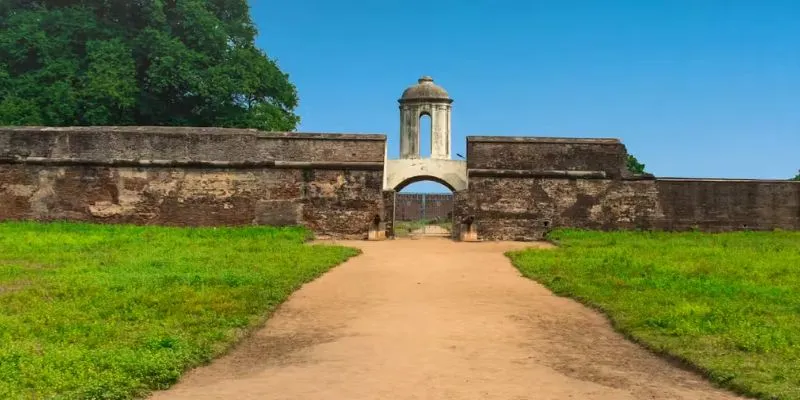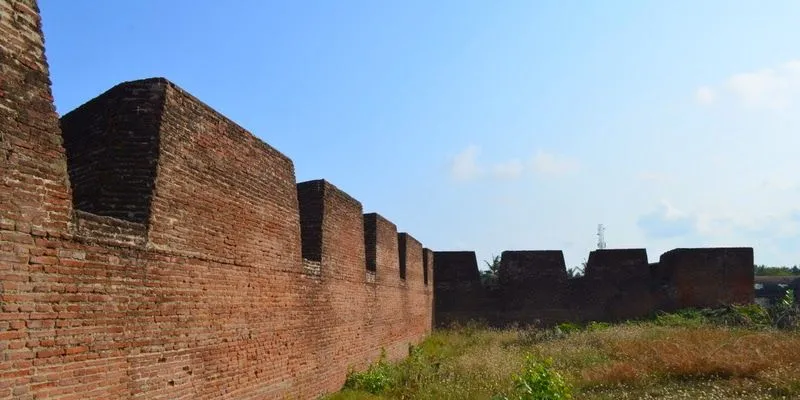
If you are interested in touring the ancient forts in and around Chennai, the Sadras Dutch fort would definitely top your list. This fort is built by the Dutch trading company to carry on their business in our country. Read further to know more about the fort, its historic importance, present condition and other details in this blog.
Facts About This Nearby Chennai Fort
- Location: Sadras (also known as Sadurangapattinam) is a fortress town in Chengalpattu district, Tamil Nadu, about 70 km south of Chennai.
- History: The Dutch East India Company established Sadras as part of Dutch Coromandel in the 17th century. The Sadras Fort was built for commercial purposes and included a large granary, stables, and elephant mounting structures. Only one of these structures survives today.
- Control: The fort was raided by the British in 1818 and came under the control of the British East India Company. It is now under the maintenance of the Archaeological Survey of India.
- Features: The fort includes a cemetery with decorated graves dating from 1620 to 1769.
- Current Status: Today, the fort is mostly in ruins, with only the outer boundary and some crumbling structures remaining. Hotels in Udumalpet offer comfortable rooms to stay and enjoy the scenic tea estates around them.
History and Significance
- The fort is a testament of the Dutch East India Company’s Presence in India. Sadras, or Sadurangapattinam, was an important trading settlement for the Dutch East India Company (VOC) along the Coromandel Coast. It was established primarily for trade, not as a purely military fortification. The Dutch focused on trading textiles, particularly muslin, and pearls. Aliyar Resorts provide the visitors with private suits to enjoy the serene beauty of the waterfalls.
- If you look at the Fort’s Purpose, the “fort” was more of a trading factory with defensive walls. It housed warehouses, granaries, and other facilities necessary for commercial operations.The surviving structures suggest a focus on storage and logistical support.
- Let us now see how the British tookover the fort. Like many other Dutch settlements in India, Sadras fell under British control in the early 19th century. This occurred during the Napoleonic Wars, when the British sought to eliminate Dutch influence in the region.
- Finally the decline of the fort’s fame began when the British took full charge of it during their reign. After the British took control, the fort lost its strategic and commercial importance. It gradually fell into disrepair. Resort in Chennai City provide you with several amenities along with spacious rooms and palatable food.
Architectural and Cultural Features
Let us discuss the remnants of the fort. Today, the fort exists primarily as ruins. The outer walls and the remnants of some internal structures are still visible. The most notable surviving feature is the Dutch cemetery.
Another architectural feature of the fort is the Dutch Cemetery present here. The cemetery contains numerous tombstones with Dutch inscriptions, providing valuable historical and genealogical information. The Carvings on the tombstones are of considerable interest. The archaeological significance of this place makes visiting it worthy of efforts. The site offers insights into the Dutch colonial presence in South India and the trade networks of the period. The ASI is working to preserve what is left of the fort. This fort In Chennai is a must to be included in your tour list.
Visiting Sadras Dutch Fort
The fort, situated near Kalpakkam along the East Coast Road (ECR) in Tamil Nadu, is easily accessible from Chennai, making it a great option for a day trip. The serene and somewhat melancholic atmosphere created by the ruins and the cemetery attracts history enthusiasts and those looking for a quiet, reflective experience. More than exploring the fort, visitors can also discover nearby attractions, such as the Kalpakkam nuclear power plant and the scenic coastal views offered by the ECR. Resort Valparai enables you to stay with family and enjoy the surrounding nature and wildlife.
Similarities Between The Three Forts Near Chennai
- Colonial Presence:
- All three forts are testaments to the European colonial presence in India, specifically in the region around Chennai.
- They represent the ambitions of European trading companies seeking to establish footholds in the lucrative Indian market.
- Trade and Defense:
- While their primary purposes varied, all these forts served dual roles: as centers of trade and as defensive structures. Chennai One Day Trip can comfortably accommodate this fort for the tourists.
- They were strategic points for controlling trade routes and protecting commercial interests.
- Historical Significance:
- Each fort holds significant historical value, providing insights into the political, economic, and social dynamics of their respective eras.
- They are important landmarks for understanding the history of Chennai and the broader Coromandel Coast.
- Architectural Remnants:
- Although varying in their state of preservation, all three forts offer glimpses into the architectural styles of their builders.
- They feature elements of European fortification architecture adapted to the local environment.
- Archaeological Survey of India (ASI):
- All three forts are now under the protection of the ASI.
Key Differences Between The Three Forts Near Chennai
- Origin and Builders:
- Fort Geldria: Dutch East India Company.
- Saint George Fort: British East India Company.
- Sadras Dutch Fort: Dutch East India Company.
- Primary Purpose:
- Fort Geldria: Early Dutch trading post.
- Fort Saint George: Major British administrative and military center. This fort is also known as the Chennai Fort.
- Sadras Dutch Fort: Trading post with focus on storage.
- Scale and Importance:
- Saint George Fort: Became the most influential, leading to the development of Madras (Chennai).
- Fort Geldria and Sadras Dutch Fort: While important trading posts, they were of lesser overall strategic significance compared to Fort Saint George. Fort Geldria Photos are a delight to watch.
- Current State:
- Fort Saint George: Well-preserved and still houses government offices and a museum.
- Fort Geldria and Sadras Dutch Fort: Largely in ruins, with remaining structures and cemeteries.
In essence, these forts collectively tell the story of the intense competition between European powers for control of India, and the lasting impact of their presence on the region.
These forts near Chennai—Geldria, Saint George, and Sadras—are more than mere historical sites; they are portals to a bygone era. You can combine these forts on your One Day Trip From Chennai. They evoke a sense of awe and reflection in visitors, allowing them to connect with the past and understand the complex narratives of colonialism, commerce, and cultural exchange that shaped the region. Resort Hotel in Chennai helps you to stay and visit these forts with family. Walking through their walls, whether well-preserved or in ruins, tourists experience a tangible link to history, fostering an emotional connection to the stories of those who lived and worked within these fortifications. The forts stand as enduring symbols of a dynamic past, inviting contemplation and appreciation for the rich tapestry of India’s heritage.



